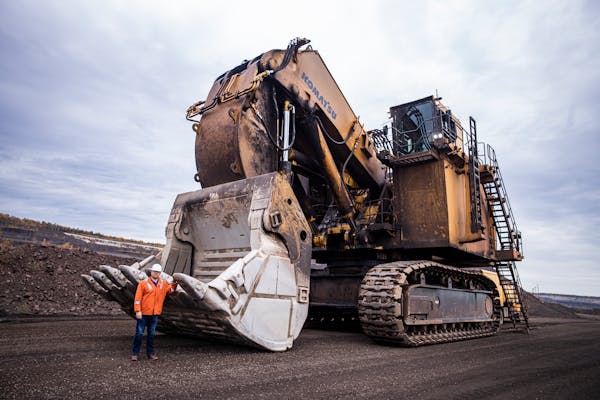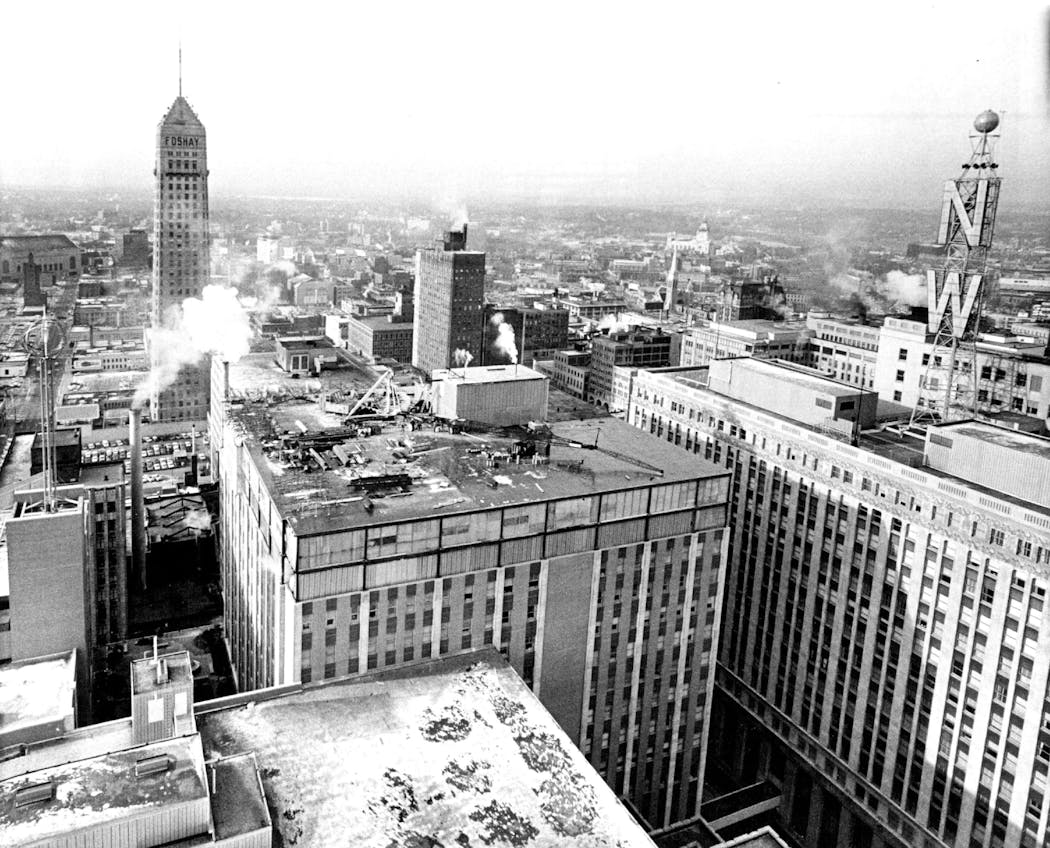What happened to Minneapolis' famous Weatherball?
Listen and subscribe to our podcast: Via Apple Podcasts | Spotify | Stitcher
Once it was famous, a literal beacon shining in the Minneapolis sky.
It was born during the Age of Neon, the largest illuminated sign between Chicago and the West Coast. And it ruled the night.
Now, its fate is a mystery that Kelly Follis wants to solve: What happened to the Weatherball? Follis sent that question to Curious Minnesota, the Star Tribune's community reporting project fueled by reader questions.
"When I was younger, we lived in Brooklyn Park. We had a clear view of downtown Minneapolis," said Follis, 63, who still lives in the city where she grew up. "You could see that thing clear as day, and we always knew what the weather would be."
She added: "It was such a part of my growing up."
Erected in 1949, the Weatherball was mammoth. Its illuminated sphere perched atop the Northwestern National Bank building, 367 feet above Marquette Avenue. Only the Foshay Tower stood taller on the skyline. More than 1.25 miles of neon tubing below it spelled out the bank's initials, NW.
But the most memorable thing about the Weatherball was that it changed color to reflect the forecast. Each day, a bank employee called the U.S. Weather Bureau for the next day's forecast. This was used to set the color of the ball, which glowed between 4:15 p.m. and 1 a.m.
Generations of Minnesotans learned the jingle that translated the ball's forecast:
"When the Weatherball is green, no change in weather is foreseen,
When the Weatherball is red, warmer weather is ahead,
When the Weatherball is white, colder weather is in sight,
If colors blink by night or day, precipitation's on the way."
'Making a mark on the city'
Northwestern National Bank was founded in Minneapolis in 1872, and grew to be one of the region's biggest banks.
It moved in 1930 to a grand new building on 6th Street and Marquette Avenue that it dubbed the "largest, most completely equipped banking structure in the Northwest," featuring what the company claimed was the longest banking room in the country. Northwestern National Bank became Norwest Bank in 1983, and the brand disappeared altogether when the bank merged with Wells Fargo in 1998.
Wells Fargo has since embraced the history of the Weatherball. And there's no more enthusiastic student than Alyssa Bentz, a Wells Fargo corporate historian.
"I'm so excited! I love talking Weatherball," she said. "It was really a remarkable thing that they did. It was their way of making a mark on the city. This was a time when you had these very large neon signs that were being put in places like Times Square, Reno, Las Vegas.
"This was kind of happening at the beginning of that 'Mad Men' age of marketing," she added. "They realized that their identity was the Weatherball."
The Weatherball jingle was a staple of radio and TV ads for the bank; many silver-haired Minnesotans can still sing or recite it. The bank even created a character, "Mr. Weatherball," featuring him in ads, pamphlets and novelty marketing items.
The Weatherball was also famous beyond Minnesota. Bentz believes that the plans and blueprints for the Weatherball now reside in the Smithsonian Institution in Washington, D.C., with the papers of its creator, Douglas Leigh, a prominent sign designer of the era.
But where is the Weatherball itself?
Fire puts Weatherball on ice
On Thanksgiving Day in 1982, the Weatherball beamed its final forecast.
On that day, a fire broke out in the ruins of the demolished Donaldson's department store, destroying what was left of the store and heavily damaging the Northwestern National Bank building. The Weatherball survived, but was damaged and rendered inoperable. Weeks later, the bank announced that it was donating the Weatherball to the Minnesota State Fair.
"The weatherball will be enshrined as an artifact of Minnesota," the Star Tribune reported in 1983. "A million to two million people a year will see it while visiting the fair or events on the fairgrounds."
The bank said at the time that it would cost $100,000 to dismantle and move the Weatherball. The ball itself was plucked from the tower by helicopter, while the supporting structure — all 78 tons of it — was dismantled and removed by ironworkers. The pieces were transported to the Minnesota State Fairgrounds for storage. And there they sat ... and sat ... and sat.
The fair agreed to take ownership of the Weatherball, intending to restore it as an attraction. But the job would be expensive, and the fair was unable to find corporate sponsors. And as for the condition of the Weatherball — let Jerry Hammer, the fair's longtime general manager, explain.
"It didn't come with any instructions," Hammer said. "There were hundreds of pieces of metal, some of them all bent to hell. It wasn't taken down with A-1 care and documentation.
"It was like a blown-up building. Just a heap of metal. And the ball itself wasn't in great shape, either."
The structure sat in an old, unused building at the fairgrounds for more than 15 years. Finally, in 2000, the building was set to be demolished and the Weatherball had to go.
"At that point it was clear nobody was interested in stepping up [financially], and we sure weren't," Hammer said. "Even if anyone had been interested, it would have taken a forensic architect to put it back together — does that even exist?
"We gave it a good shot."
Hammer isn't sure who carted away the Weatherball. It was "recycled" along with the other material stored in that building, he said, and likely sold for scrap by whoever took it. But wherever it is, the Weatherball hasn't been forgotten.
"It was a landmark, for sure," Follis said. "You kind of long for that nostalgia."
If you'd like to submit a Curious Minnesota question, fill out the form below:
Read more Curious Minnesota stories:
Why were so many of Minneapolis' Park Avenue mansions torn down?
Why did Minneapolis tear down its biggest train station?
From bankrupt racetrack to aviation hub — what remains from MSP Airport's early days?
What happened to Minneapolis' famous 'Mighty Kimball' organ?
Were Minneapolis' skyways first created to combat the cold – or something else?
How did Nicollet Island become parkland with private housing on it?
Correction: A previous version of this story misstated how the Weatherball tower was dismantled and removed.






